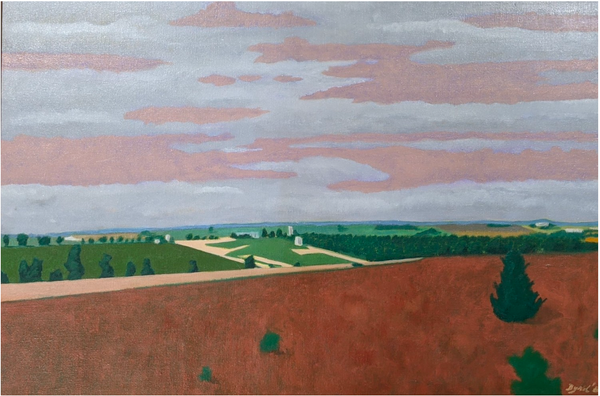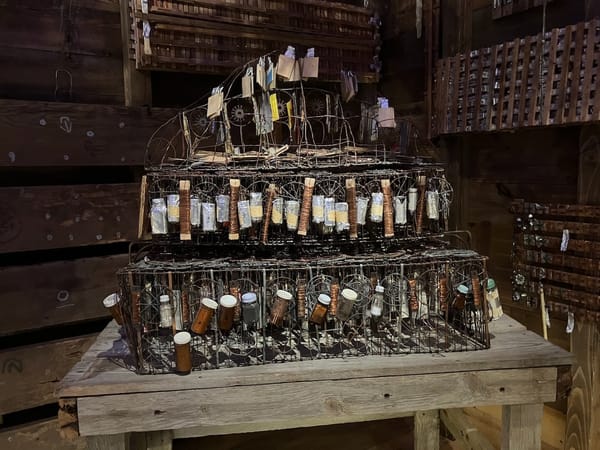Reflections on Robin Jebavy's Artist Talk
by Annabella Dlugi
The below essay was first printed in The Lawrentian, Lawrence University’s student newspaper. Lawrence University talks like this are free and open to the public.
On Friday, April 19th, 2024, visual artist Robin Jebavy gave an artist talk at the Lawrence University Wriston Art Center. The event took place from 4:30 p.m to 5:30 p.m., followed by a short break for questions and a reception. Open and free to the public, Jebavy’s presentation brought in a variety of students, professors and community members.
The hour was full of art: Jebavy prepared a slide show of numerous paintings she had made over the last 20 years. She began her talk with some of her art from undergrad and worked her way up to a piece she finished the night before coming to campus. It was interesting to see how her style and experimentation changed over time, something she herself spoke about in her presentation.
Jebavy’s paintings are unlike many of the paintings I’ve seen before. They are busy, living in the liminal space that exists between being captivating and overwhelming. They are brilliant, chaotic, philosophical and full. Some of them are uncomfortable to look at while others are deeply mesmerizing. Either way, they radiate with that undefinable thing called “art.”
Many of the paintings she showed us contained glassware imagery, infused with reflections and refractions. In her presentation, Jebavy said she works in themes, moving from one kind of piece to the next. Throughout all of her work, there was exceptional detail to color—dark and bright and crazy—as well as to light and shadow.
In her talk, Jebavy shared some insight into how she thinks of her own art. She stated that while her aim is for everything to be up for interpretation, she sees her work as blurring the line between the self and the world. She also spoke about how she finds and creates musicality in her painting, which seems to make sense given her lively and nuanced style.
After hearing this analysis, I couldn’t help but consider how the self and the world are bridged in her painting. What does bridging the self with the world even mean? Staying true to her value of open interpretation, I was left to ponder this on my own. While I’m not sure of my conclusions yet, I did develop an interpretation.
To me, I think that the self is the one viewing the art, and the art represents the world. In viewing the art, we merge with it. In this merging, we lose our sense of self, which seeps into our sense of the world. Likewise, the world seeps into our sense of self. Thus, the self and the world blend, and neither we nor the art are clearly defined.
Even after leaving the Wriston Art Center, Jebavy’s paintings stayed with me. It reminded me to !nd beauty in the ordinary, delve into the philosophical implications of art and stay curious about my own aims and intentions with art. I hope that anyone who was unable to attend the talk is able to still engage with Jebavy’s art, in whatever way works for them. Cheers to the chaos of creating!
Find images of work by Robin Jebavy on their website.
Annabella Dlugi is a junior at Lawrence University most interested in the intersection of arts and equity. She is fueled by conversations with friends, coffee, walking, and anything involving a stage.



